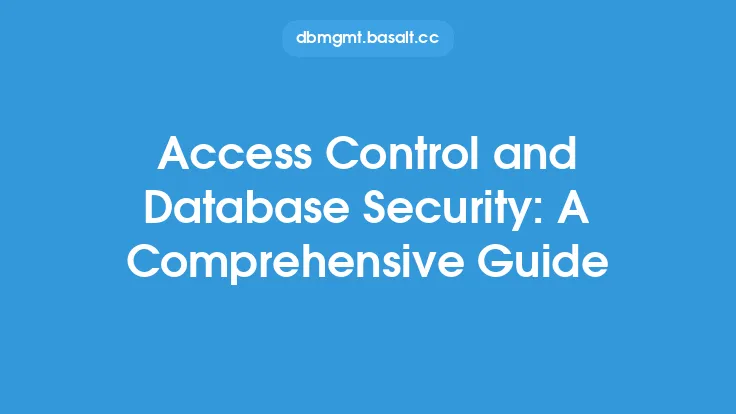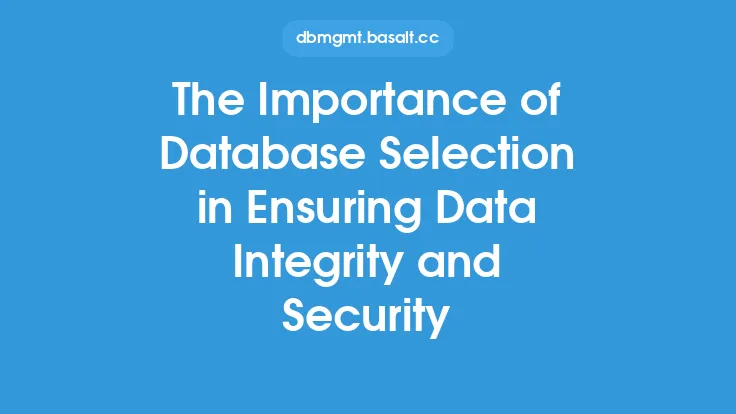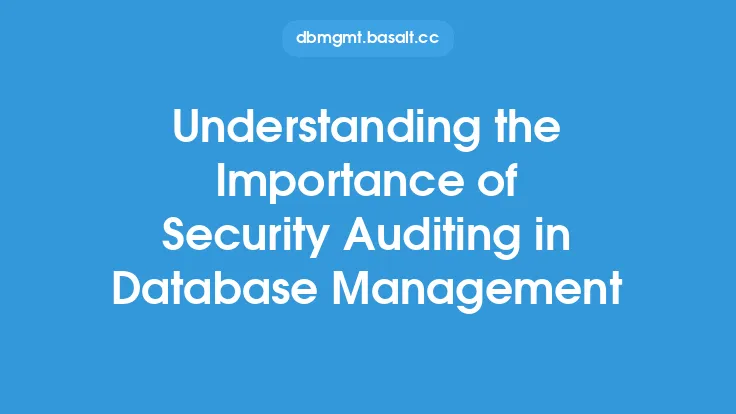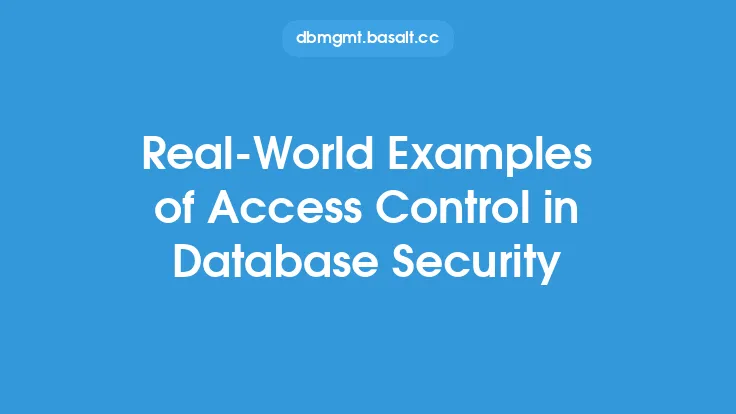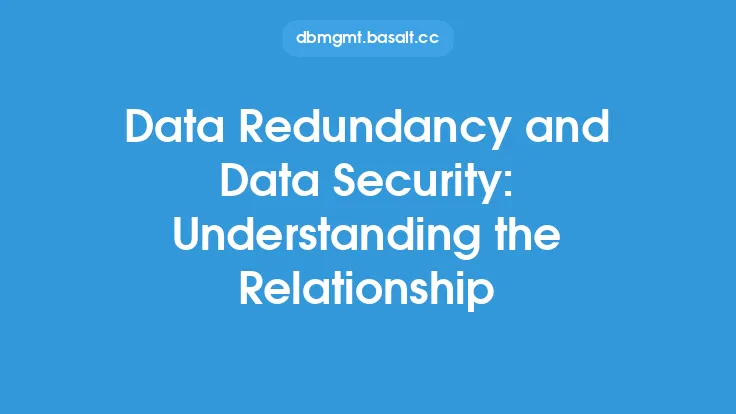Database security is a critical aspect of protecting sensitive information, and access control is a fundamental component of this security. Access control refers to the mechanisms and policies that regulate who can access a database, what actions they can perform, and under what circumstances. In this article, we will delve into the concepts and principles of access control in database security, exploring the key elements that underpin this crucial aspect of data protection.
Introduction to Access Control Concepts
Access control is based on several key concepts, including authentication, authorization, and auditing. Authentication is the process of verifying the identity of users, ensuring that only authorized individuals can access the database. Authorization, on the other hand, determines what actions a user can perform once they have been authenticated. Auditing involves monitoring and logging all access and modifications to the database, providing a record of all activities. These concepts work together to provide a robust access control system, ensuring that sensitive data is protected from unauthorized access or malicious activities.
Principles of Access Control
The principles of access control are designed to ensure that access to a database is granted in a controlled and secure manner. The principle of least privilege states that users should only be granted the minimum level of access necessary to perform their tasks, reducing the risk of unauthorized access or data breaches. The principle of separation of duties ensures that no single user has too much power or control, preventing any one individual from compromising the security of the database. Additionally, the principle of accountability ensures that all actions are traceable to a specific user, providing a clear audit trail in the event of a security incident.
Access Control Mechanisms
Access control mechanisms are the technical implementations of access control policies. These mechanisms can include password-based authentication, biometric authentication, and smart card authentication. Authorization mechanisms, such as access control lists (ACLs) and role-based access control (RBAC), determine what actions a user can perform on a database. ACLs are used to grant or deny access to specific database objects, such as tables or views, while RBAC assigns users to roles, which define the actions they can perform. Other mechanisms, such as encryption and auditing, provide an additional layer of security, protecting data both in transit and at rest.
Database Access Control Models
Database access control models provide a framework for implementing access control policies. The discretionary access control (DAC) model grants access based on the discretion of the owner of the database object. The mandatory access control (MAC) model, on the other hand, grants access based on a set of rules that are enforced by the database management system. The role-based access control (RBAC) model grants access based on the roles that users are assigned to. Each model has its strengths and weaknesses, and the choice of model depends on the specific security requirements of the database.
Implementing Access Control Policies
Implementing access control policies involves several steps, including identifying the sensitive data that needs to be protected, determining the access control model to be used, and configuring the access control mechanisms. It is also important to regularly review and update access control policies to ensure that they remain effective and relevant. This includes monitoring user activity, auditing database logs, and performing regular security audits to identify vulnerabilities and weaknesses.
Common Access Control Threats
Access control systems are vulnerable to several types of threats, including password cracking, phishing, and privilege escalation. Password cracking involves using automated tools to guess or crack passwords, while phishing involves tricking users into revealing their login credentials. Privilege escalation occurs when a user is able to gain elevated privileges, allowing them to perform actions that they would not normally be authorized to perform. To mitigate these threats, it is essential to implement strong password policies, use multi-factor authentication, and regularly review and update access control policies.
Best Practices for Access Control
Best practices for access control involve implementing a robust and multi-layered access control system. This includes using strong passwords, implementing multi-factor authentication, and regularly reviewing and updating access control policies. It is also essential to provide regular training and awareness programs for users, ensuring that they understand the importance of access control and the role they play in protecting sensitive data. Additionally, it is crucial to regularly monitor and audit database activity, detecting and responding to security incidents in a timely and effective manner.
Conclusion
Access control is a critical component of database security, providing a robust and secure mechanism for protecting sensitive data. By understanding the concepts and principles of access control, implementing access control mechanisms, and following best practices, organizations can ensure that their databases are protected from unauthorized access or malicious activities. As the threat landscape continues to evolve, it is essential to stay informed and up-to-date on the latest access control technologies and techniques, ensuring that sensitive data remains protected and secure.

